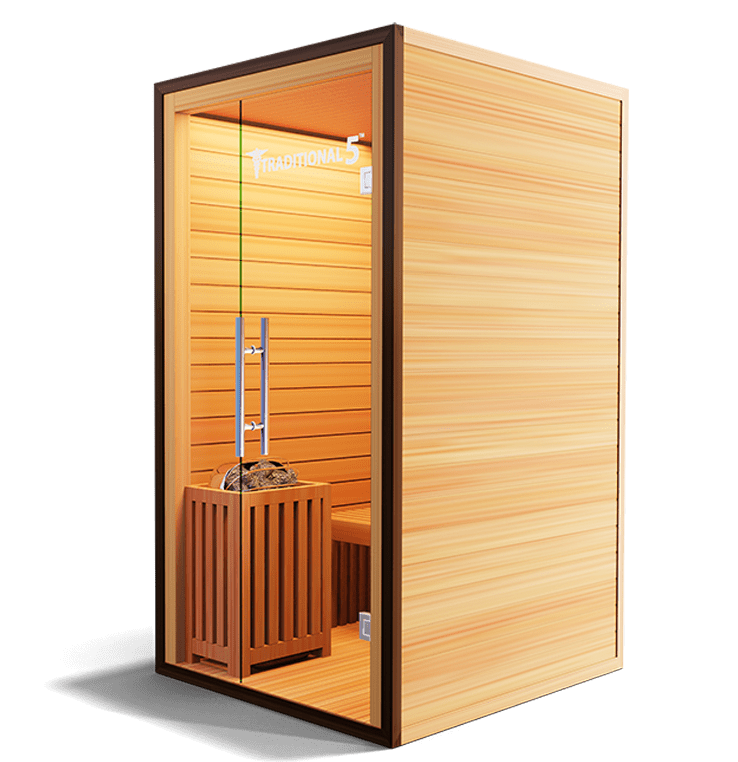The Main Principles Of Traditional Sauna
Traditional Sauna Can Be Fun For Everyone
Table of ContentsSome Known Factual Statements About Traditional Sauna The Best Strategy To Use For Traditional SaunaThe 5-Minute Rule for Traditional SaunaWhat Does Traditional Sauna Do?
The majority of the weight lost in a sauna is water loss and is re-gained upon rehydrating. Nonetheless, certainly sauna can be an integral part of a healthy weight-loss program. To check out the distinctions between conventional and IR saunas, I will certainly separate these right into proven, theoretical, and fabricated differences.Therefore, the most popular point in the saunawhich goes to the ceiling directly above the sauna heateris usually between 185 and 190 F. Traditional Sauna. Claims that a conventional sauna surpasses 200 F is just not true and not applicable for electrical saunas offered in the US. The temperature for a far-infrared sauna is usually established between 120 and 140 F; however, unlike the typical sauna, the goal in and IR area is not to achieve a heat
Because of this, the temperature level distinction is almost unnecessary, considering that excessive sweating causes both sauna types, but the approach of heating up the body is different. In an IR sauna the bather will really feel hot and will certainly sweat profusely, yet at much reduced temperature levels. Hence, if the objective is to spend longer amount of times in the sauna, the IR sauna is a great selection.

7 Simple Techniques For Traditional Sauna
When the high temperature is attained, the aspects cycle on and off to preserve the heat. Most conventional sauna individuals take pleasure in putting water over the rocks to develop vapor to elevate sauna moisture levels. The advantages of pouring water over the rocks consist of: making the area extra comfy, dampening the nasal flows, and enabling the use of aromatherapy by mixing crucial oils with the water.
In a far-infrared sauna, the heat waves permeate the body to effectively heat up the body and increase the body core temperature. To accomplish this enhanced temperature level, Far-infrared emitters create infrared power which is close to the very same wavelength as that which the body normally emitsoften described as the "Vital Array" of 7 to 14 microns), so the power is published here well obtained by the body.
When the energy goes into the body, it causes the body temperature level to boost and eventually results in sweating. In an infrared sauna it is very important for the emitters/heaters to stay on nearly continuously. Given that there is no mass of rocks to preserve warm, the sauna will cool if the emitters shut down.
As pointed out over, the sauna bather in an infrared room wishes to position himself in front of operating emitters to get optimal advantage from the warm. The home heating time for the 2 spaces can be very various, relying on just how the spaces are utilized. For a typical sauna, a bather needs to permit 30-40 mins for the space to achieve a wanted temperature and to appropriately pre-heat the rocks.
Not known Details About Traditional Sauna
A well built sauna will generally attain a temperature level of 150-160 F in about 30-40 minutes. For hotter temperature levels, the room may need to warmth click here to read for a longer period.
To some, 15 mins was "squandered" while the infrared power warmed the wood panels as opposed to warming a body, while others find a pre-heated room to be much more comfy and believe a raised beginning temperature level is required to start perspiring. The length of recommended use for every area is about the same (10-15 mins per session); however, as a result of the reduced air temperature levels and the capacity to really feel the results of infrared warm faster than a standard sauna, it is not uncommon for a person to invest an overall of 20-30 minutes in an infrared sauna.
Traditional saunas have a tendency to be larger (thus use more electrical energy) than infrared saunas, although standard saunas are definitely available in one and 2 person sizes. For a two-person conventional sauna, 5x6 or 5x7 dimension is most preferred. The top bench can easily seat two or three individuals and is likewise enough time to relax during the sauna session.


The ordinary expense per kWH of electrical power in the united state is roughly $0.11, so a 4.5 kW heater will set you back approximately $.50 to compete one hour, if the heater runs constantly for one hour. Normally a sauna heater will certainly compete 75% of the first hour and 50% of succeeding hours on because news the elements cycle once the set temperature level is achieved.
Traditional Sauna for Beginners
A 2 individual far-infrared area is normally literally smaller sized than a conventional sauna, usually regarding 4' x 4' or smaller sized. The IR furnace is typically 1.5-1.7 kW using a 120 volt 15 amp plug-in solution. Since the room can be used quicker than a sauna space, we will certainly think the area is used for to of an hour consisting of heat up time.
Lastly, there is a hardly ever reviewed distinction in the social experience between both spaces. While our culture has actually shed a few of the social advantage of the traditional sauna experience, it can be very socially gratifying. From household time in the sauna, to heart-felt conversations with loved ones, to sauna partiesthe standard sauna experience can result in intimate interacting socially.
Many higher end infrared spaces consist of colored light treatment, noise systems and full-glass fronts. The dimension of most areas enable 2 people to conveniently utilize the space, while some styles might enable a third or fourth person to make use of the space. Custom-made infrared rooms are also available, with area sizes available up to 7' x 8' x 7' high.